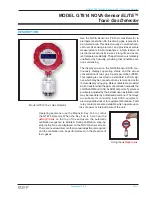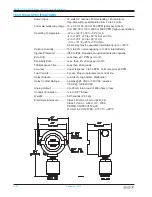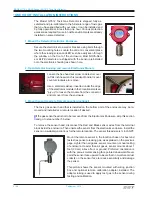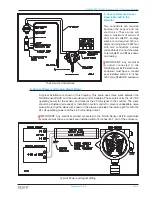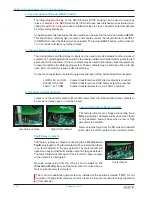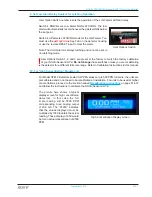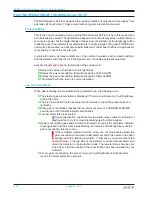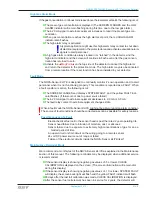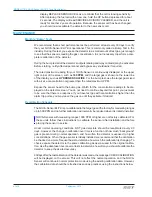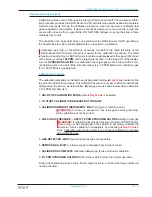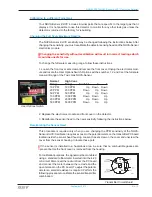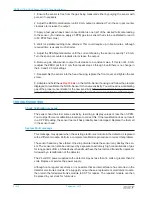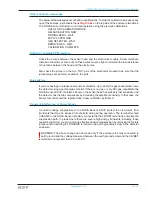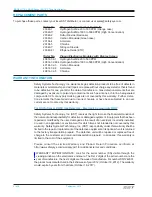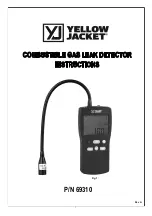
814-14
September, 2015
MODEL GT814 NOVA-Sensor
ELITE™
Toxic Gas Detector
1. Ensure the sensor is free from the gas being measured either by purging the sensor with
pure air if necessary.
2. Adjust the ZERO potentiometer until 4.0 mA output is obtained. Turn the zero pot counter
clockwise to increase the output.
3. Apply a test gas whose known concentration is one half of the desired full scale reading
to the sensor. (For instance, apply 25 PPM gas to a sensor that is to be calibrated to read 0
to 50 PPM Toxic Gas.)
4. Wait for a stable reading to be obtained. This could require up to five minutes, although
required time is usually much shorter.
5. Adjust the SPAN potentiometer until the current drawn by the sensor is exactly 12.0 mA.
Turn the span pot counter clockwise to increase the output.
6. Remove gas, allow sensor output to decrease to a constant value. If this is not 4.0 mA,
readjust the ZERO pot for 4.0 mA, then repeat steps 3 through 6 until there is no change in
the 4.0 and 12.0 mA settings
7. Reassemble the sensor into the head housing, replace the front cover and tighten the set
screw.
8. Activate and hold the
▲MagPoint▲
on the NOVA-Sensor housing and follow the prompts
displayed to recalibrate the NOVA-Sensor to the new sensitivity. You will need new calibrating
gas of the proper concentration for the new sensitivity. The detector will not read your new tar-
get gas correctly if you do not recalibrate using the specified concentration for calibration gas
.
TROUBLESHOOTING
Check Calibration message
The sensor head has lost some sensitivity, resulting in display values of less then 0 PPM.
You must perform a recalibration procedure to correct this. If the recalibration does not result
in a 0 PPM reading, the sensor fuel cell has probably been damaged. Replace the fuel cell
in the sensor head.
System Fault message
This message may appear when the existing electronics module in the detector is replaced
with a different module. Perform a complete recalibration procedure to correct this problem.
The sensor head may have failed. One drop of water inside the sensor may destroy the sen-
sor. The sensor can also be destroyed by exposure to extremely high concentrations of gas
for long periods of time. A failed sensor head must have the fuel cell and transmitter replaced,
followed by a recalibration of the detector.
The 24 volt DC power supplied to the detector may be less than 16 volts or greater than 32
volts. Replace or service the power supply.
Although not a regular occurrence, it is possible that an internal failure has occurred in the
detector electronics module. We suggest you purchase a replacement electronics module,
then return the failed electronics module to SST for repairs. The repaired module can then
be placed in your stock for future use.
Summary of Contents for GT814
Page 2: ...Blank Page ...


